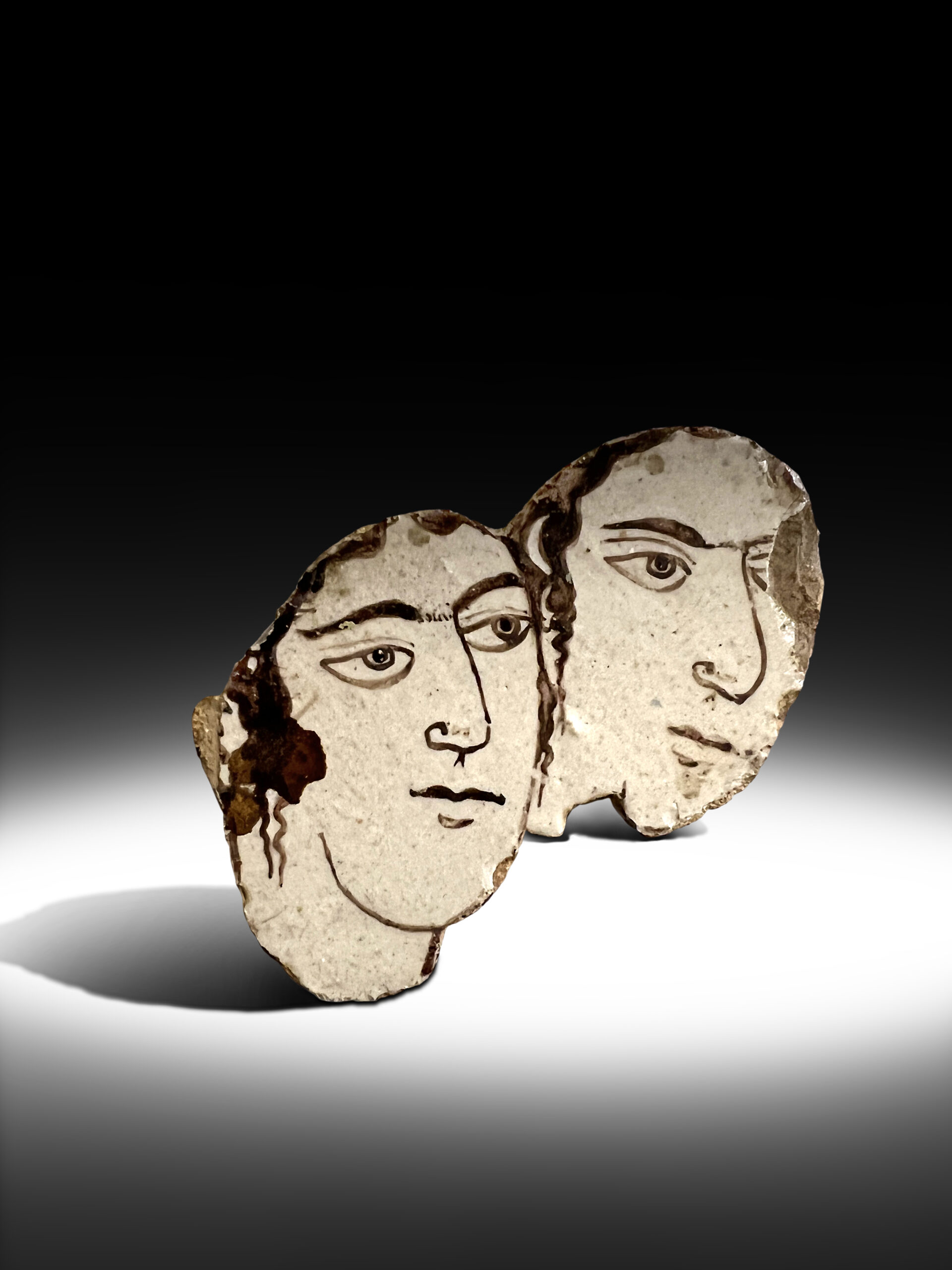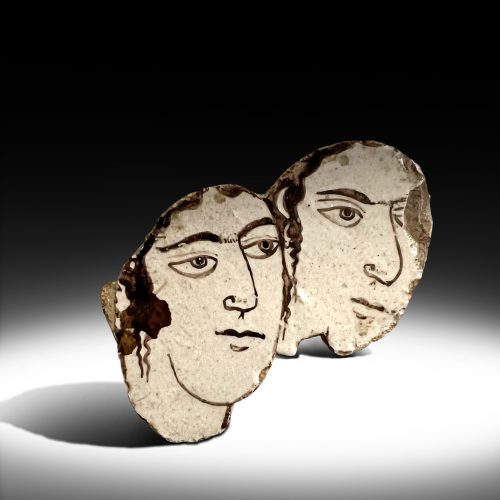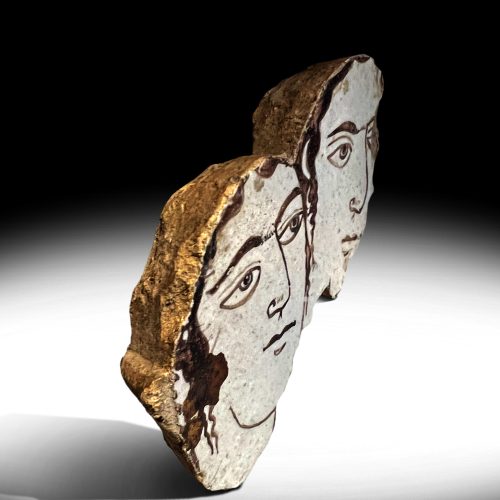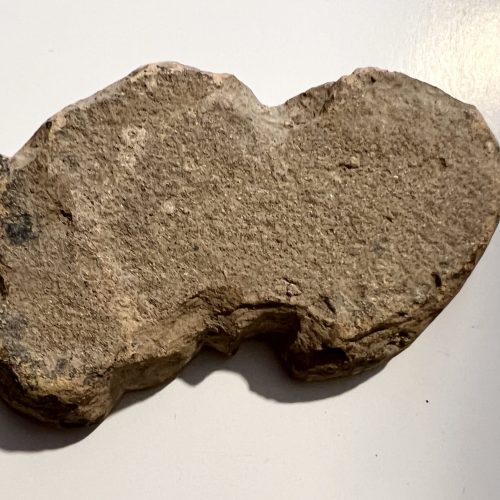PERIOD: | Mid17th Century |
|---|
ORIGIN: | Persia |
|---|
DIMENSIONS: | 8×6 Cm |
|---|
DESCRIPTION: | Composed of two bound tiles, depicting a safavid youth faces on white ground. |
|---|
| Footnote: | Cuerda seca (Spanish for ‘dry cord’) developed as a technique alongside tile mosaics in the latter part of the fourteenth century in Central Asia and consisted of complete tiles painted with coloured pigments which were separated from each other to prevent running by an oily substance mixed with manganese, which left a dark lining after firing (see Porter 1995, pp.19-20). The technique continued to be utilised throughout Persia into the seventeenth and early into the eighteenth century. Panels consisting of multiple tiles were typically used for architectural adornment and frequently portray narrative scenes from literature. This present lot in this way resembles inv.no. EA1979.16 from the Ashmolean Museum, Oxford, with its forty-eight tiles to the forty-five of the present lot and inv.no. EAX.3135, also from the Ashmolean, a Qajar equivalent of the same scene from the Yusuf and Zuleykha story. |
|---|
| Condition reports; | As expected the fragment some surface scratches due to its old age as viewed. |
|---|
Provenance: | Hayaux du Tilly In1967France, thereupon acquired,by OliverHoare Collections. |
|---|
| | |
|---|








